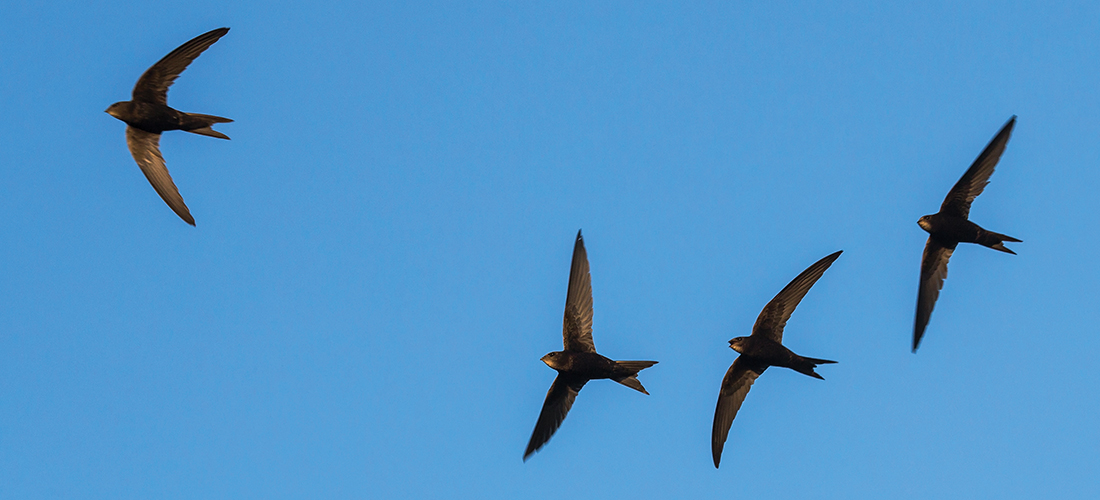
Swirling Birds
The return of the chimney swifts
By Susan Campbell
The approach of fall means many things to many people: cooler days, longer nights, the smell of pumpkin spice — all things that I love. But the much anticipated evening congregations of chimney swifts is also near the top of the list. Swirls of these long-distance migrants form at dusk for several weeks as the birds pass through North Carolina on their way south.
If during the warm weather you have seen small, twittering, fast-flying birds wheeling about high overhead, you are likely seeing chimney swifts. These “flying cigars” can be observed across the state, but given their affinity for human habitation, they are more abundant where people, buildings and, as their name implies, chimneys are found.
Chimney swifts are known to breed throughout North Carolina from the mountains to the coast. Historically, they were undoubtedly sparsely distributed, nesting in big hollow trees in old growth forests in the eastern two-thirds of the United States. But as settlers spread across our state and provided abundant nesting cavities in the form of chimneys, swifts became more common. Today they are virtually dependent on humans for their reproductive success. But, unfortunately, most modern chimneys with caps or extensive lining are unsuitable for the birds. If they can enter a newer chimney, the smooth substrate within the brick or stone prevents the birds from clinging and, furthermore, does not allow adhesion of the nest (built with small sticks and saliva) to the wall. As a result, recent declines in the chimney swift population have been documented across the species range.
Without a doubt, these small birds are incredible fliers, more so than swallows and martins. They spend the vast majority of their waking hours on the wing, except while nesting. Even courtship and copulation occur in mid-air. Only at night do they descend to rest in a protected spot — which is almost always a chimney of some sort.
By late July, flocks of swifts begin congregating, feeding on abundant aerial insects, and roosting together in larger chimneys. These aggregations begin to move southward in August on prevailing northerly air currents to wintering grounds in the tropics. You may find hundreds swirling around in the vicinity of older schools, churches and office buildings that still retain substantial brick chimneys. Such chimneys are more spacious and year after year provide critical staging grounds for generations of swifts. It is an awesome sight to see thousands of individuals pouring into a roost site at dark.
Unfortunately, these unique birds have been misunderstood at this time of year and are often thought to be disease-carrying bats. As a result, significant numbers of sites have been capped for fear of being a human health hazard. Big old chimneys are lost across our state each year to such misunderstandings.
Additionally, changes in modes of heating result in large chimneys being retired: usually covered and rendered unavailable to swifts. Quite simply, there is a general lack of awareness of the structures as an important biological resource. Furthermore, across most of our state, we are still in the process of identifying major roost sites.
During the winter months, chimney swifts are found in loose aggregations throughout the upper Amazon basin of South America. There they loaf and feed on an abundance of flying insects until lengthening days urge them northward again. The return trip brings individuals, swirling and darting, back to their summer homes by early April. PS
Susan Campbell would love to hear from you. Feel free to send questions or wildlife observations to susan@ncaves.com.





